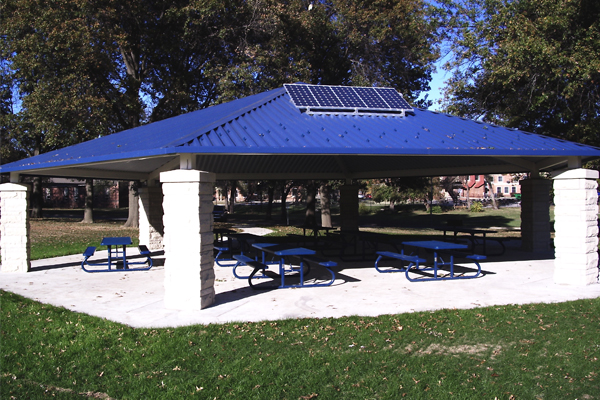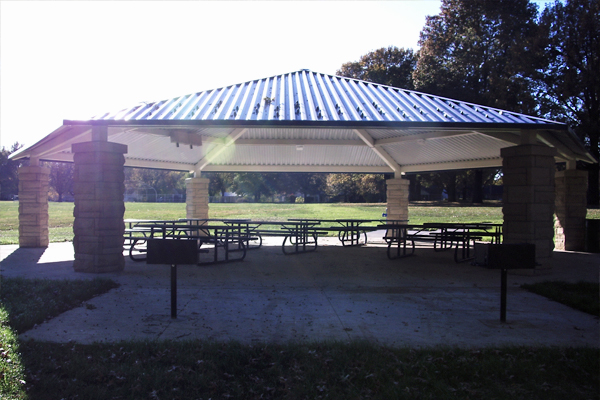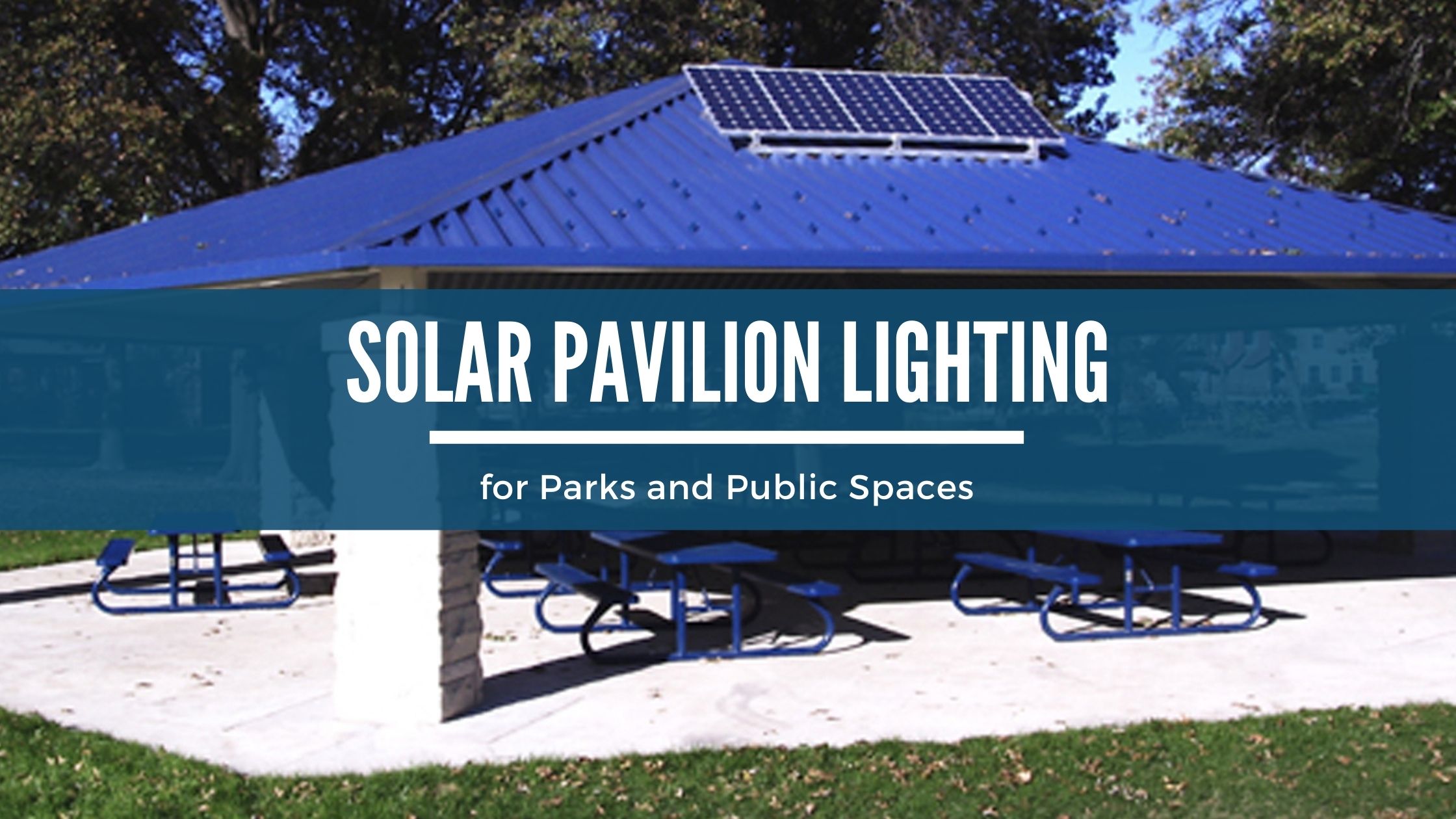Pavilions installed in parks and public spaces provide a great place to gather for parties, a place to have a picnic, meet people, or just find some shade and a place to sit and rest. In the early evenings, sometimes even before the parks and public spaces close, there can be a need for lighting at the pavilions. Since most pavilions are in areas where the traditional grid power is not available, solar-powered lights can fill in that gap and provide a great way to provide the needed lighting.
Instead of trenching in standard electricity, disturbing surrounding landscapes, and costing lots of additional money for the wire, meter, and installation, solar is a much easier way to provide the power for the lighting. The solar pavilion lighting integrates the solar panels on the roof of the structure with the batteries and light fixtures installed underneath the roof of the structure.
During the day, the solar charges the batteries, and the power is stored in the battery assembly. At night, the lights can either turn on automatically, or use a switch or spring-loaded timer, and provide the lighting for the area. Other small electronics, such as chargers for cell phones, can be used as well. The addition of chargers or other equipment must be taken into consideration when sizing up the solar and battery backup.

The battery assembly is installed under the roof allows for easier access and maintenance over the life of the system. This installation also shades the batteries, allowing for them to not overheat. The battery’s cabinet can be powder coated to match the structure and light fixture.
At night, the light fixture is activated and comes on. The light fixture is typically mounted center of the pavilion for single fixture setups, or when multiple fixtures are required, can be placed around the structure spaced to provide the proper illumination, depending on the needs of the system. The most popular system is a canopy-style setup that allows for a flush ceiling mount. This low-profile design provides the best option for lighting needs to remote pavilions.
The fixtures can be either controlled by a dusk to dawn controller, using the solar panel to act as the photocell, but as most parks are not open all night, a spring-loaded timer or set clock is the best option for these installations. Many locations have the lights on at either full or a reduced intensity after the area closes to help with security. If reduced intensity is used, the addition of a motion sensor would be a way to allow for full illumination only when motion is detected.

If the lights will not operate all night, the needed solar power assembly is much smaller than for applications where all-night lighting is required. Specialty switch capabilities can also be installed for special events where the lights would need to stay on longer. This would allow for illumination during the events and not cause problems with the solar system for the rest of the time.
The pictures show an installation we have completed for a park in Kansas City, MO at a local park. The system runs four canopy fixtures all night for visitors to the park. These lights were installed in 2010 and show the perfect application for solar pavilion lighting as there is no nearby infrastructure. Many of these types of systems have been installed in various parks and public spaces, providing the benefits shown above.


